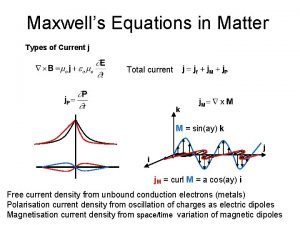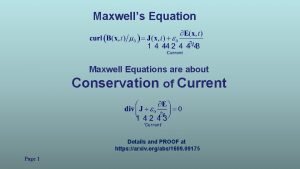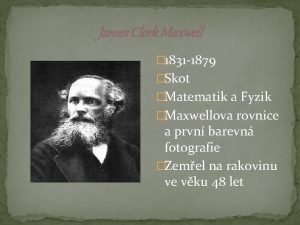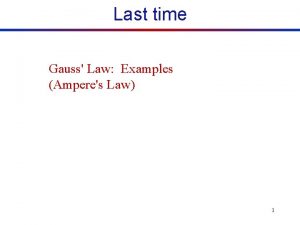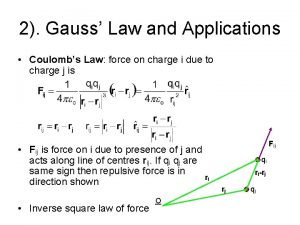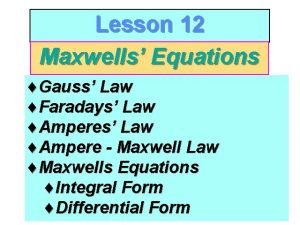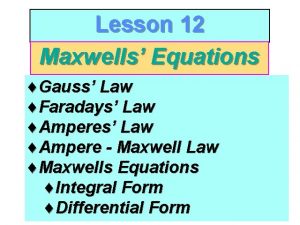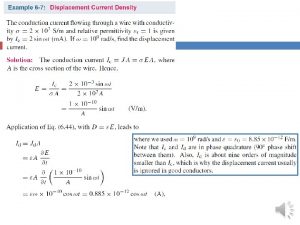CH32 Maxwells Equations 4 Gauss law for electricity




- Slides: 4

CH-32: Maxwell's Equations (4) Gauss' law for electricity: Relates net electric flux to net enclosed electric charge. Gauss' law for magnetism: Relates net magnetic flux to net enclosed magnetic charge. Faraday' law: Relates induced electric field to changing magnetic flux. Ampere-Maxwell law: Relates induced magnetic field to changing electric flux and to current.

Gauss' Law for Electric and Magnetic Fields In Chapter 23, we studied Gauss’ law for electric fields: The simplest magnetic structure that can exist is a magnetic dipole. Magnetic monopoles do not exist (as far as we know). Gauss' law for magnetic fields is a formal way of saying that magnetic monopoles do not exist. The law asserts that the net magnetic flux ΦB through any closed Gaussian surface is zero:

Faraday’s and Maxwell’s laws of Induction In Chapter 30 you saw that a changing magnetic flux induces an electric field, and we ended up with Faraday's law of induction: Because symmetry is often so powerful in physics, we should be tempted to ask whether induction can occur in the opposite sense; that is, can a changing electric flux induce a magnetic field? The answer is that it can; furthermore, the equation governing the induction of a magnetic field is almost symmetric with the above equation. We often call it Maxwell's law of induction after James Clerk Maxwell, and we write it as:

Ampere–Maxwell Law Now recall that the left side of the above equation, the integral of the dot product around a closed loop, appears in another equation—namely, Ampere's law: Thus, our two equations that specify the magnetic field produced by means other than a magnetic material (that is, by a current and by a changing electric field) give the field in exactly the same form. We can combine the two equations into the single equation:
